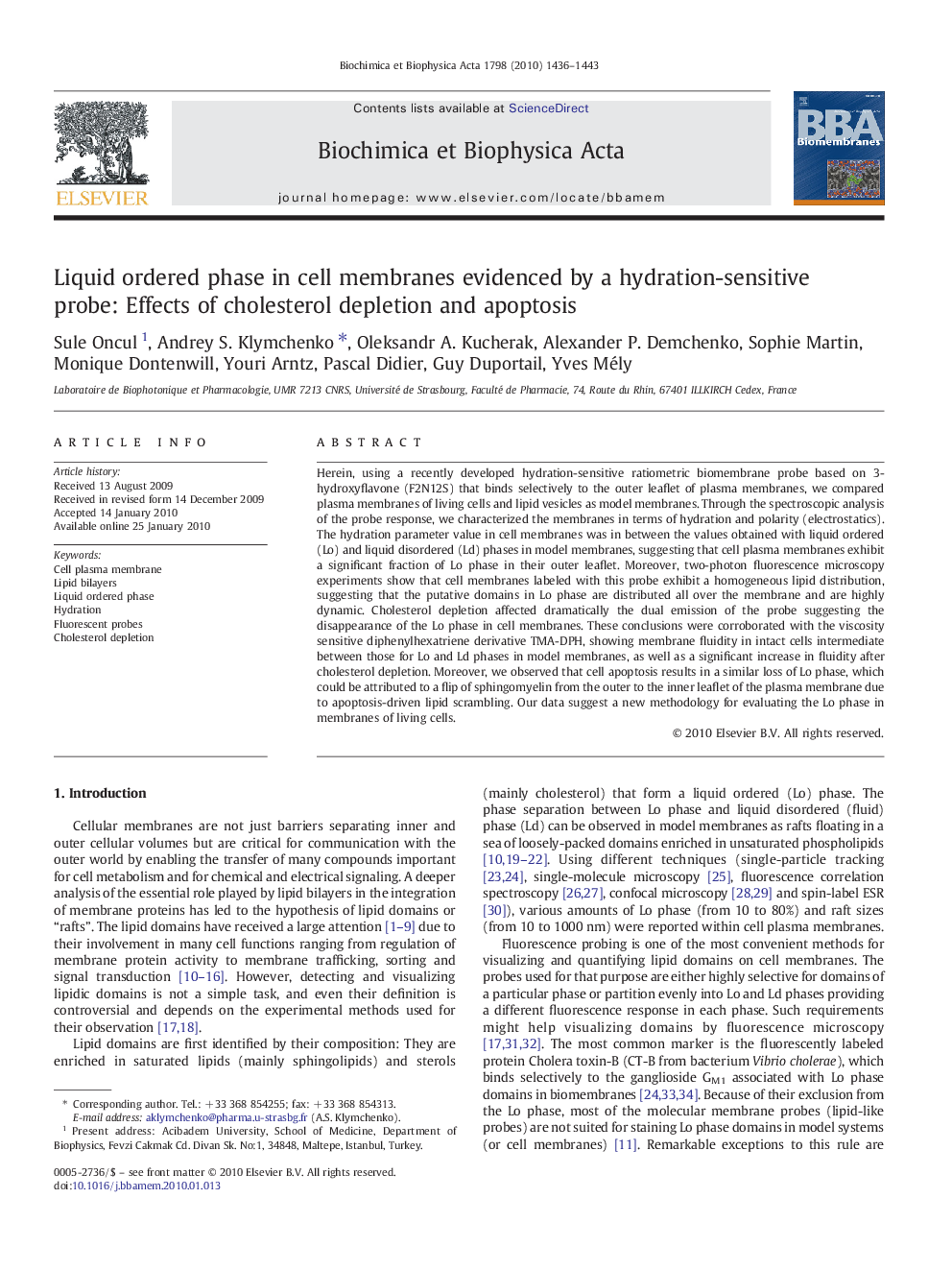| Article ID | Journal | Published Year | Pages | File Type |
|---|---|---|---|---|
| 1944834 | Biochimica et Biophysica Acta (BBA) - Biomembranes | 2010 | 8 Pages |
Herein, using a recently developed hydration-sensitive ratiometric biomembrane probe based on 3-hydroxyflavone (F2N12S) that binds selectively to the outer leaflet of plasma membranes, we compared plasma membranes of living cells and lipid vesicles as model membranes. Through the spectroscopic analysis of the probe response, we characterized the membranes in terms of hydration and polarity (electrostatics). The hydration parameter value in cell membranes was in between the values obtained with liquid ordered (Lo) and liquid disordered (Ld) phases in model membranes, suggesting that cell plasma membranes exhibit a significant fraction of Lo phase in their outer leaflet. Moreover, two-photon fluorescence microscopy experiments show that cell membranes labeled with this probe exhibit a homogeneous lipid distribution, suggesting that the putative domains in Lo phase are distributed all over the membrane and are highly dynamic. Cholesterol depletion affected dramatically the dual emission of the probe suggesting the disappearance of the Lo phase in cell membranes. These conclusions were corroborated with the viscosity sensitive diphenylhexatriene derivative TMA-DPH, showing membrane fluidity in intact cells intermediate between those for Lo and Ld phases in model membranes, as well as a significant increase in fluidity after cholesterol depletion. Moreover, we observed that cell apoptosis results in a similar loss of Lo phase, which could be attributed to a flip of sphingomyelin from the outer to the inner leaflet of the plasma membrane due to apoptosis-driven lipid scrambling. Our data suggest a new methodology for evaluating the Lo phase in membranes of living cells.
